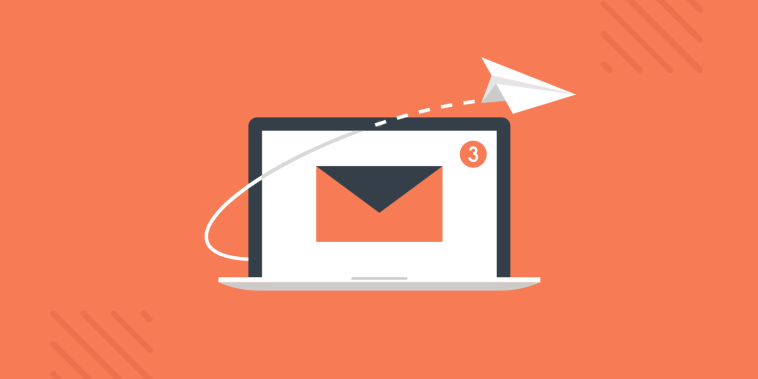Introduction.
Email marketing remains one of the most powerful tools for connecting directly with an audience. With its ability to land right in someone’s inbox, email is an ideal channel for promoting products effectively without feeling intrusive.
Think about it: whether it’s a limited-time offer, a new product announcement, or just keeping your customers in the loop, email gives businesses a direct line to customers who have already shown interest. But with inboxes overflowing, knowing how to stand out is the real challenge.
This guide will walk through some practical, approachable strategies to promote products using email marketing.
By the end, you’ll have a clear understanding of the various tactics that work best, the pros and cons of email marketing as a promotional tool, and tips on creating compelling, clickable content.
Plus, I’ll address some common questions that often come up in email marketing and help you consider the best ways to reach your audience.
Why Email Marketing Matters for Product Promotion
Email marketing remains highly effective for several reasons. For one, it’s cost-effective. Unlike paid ads or elaborate social media campaigns, email lets you communicate directly with customers who have already opted to hear from you, meaning they’re more likely to be interested in what you’re promoting.
Email campaigns can also be customized based on customer behaviour, preferences, and past purchases, making it easy to personalize your messaging for each segment of your audience.
Additionally, studies show that for every $1 spent on email marketing, there’s an average return of $42—a stat that puts email marketing’s potential profitability front and centre.
It’s this high ROI that keeps email relevant, even as new marketing channels pop up. But the trick to success is using it wisely to keep subscribers engaged and not overwhelmed.
How Do I Promote Products Via Email Marketing?
To start, let’s cover the essentials of a promotional email and what makes it effective.
1. Start with a Clear Subject Line.
The subject line is your first impression, so make it count. A clear, enticing subject line can make the difference between your email being opened or ignored. Keep it direct, relevant, and maybe even a little intriguing. Examples include:
- “New Arrivals Just for You!”
- “Flash Sale—Only 24 Hours Left!”
- “Just Dropped: Our New Collection is Here!”
2. Personalization Is Key.
When people open an email, they expect relevant content. Personalization—like adding the subscriber’s name or tailoring the email based on past purchases—increases the likelihood of engagement. A simple “Hi, [First Name]!” can make the email feel more conversational and less robotic.
3. Compelling Copy and Visuals.
The body of your email should be clear and persuasive, without being too long. Break up text with attractive visuals or product images, and include links where they make sense. Avoid going heavy on text; instead, focus on creating a visually appealing layout that’s easy to scan.
4. Include a Clear Call to Action (CTA).
Without a clear next step, even the best email won’t accomplish much. Tell your readers exactly what you want them to do, whether it’s “Shop Now,” “Learn More,” or “Claim Your Discount.” Place CTAs strategically throughout the email and make them noticeable.
5. Create Urgency When Appropriate.
Sometimes, a sense of urgency can motivate readers to take action. This could be a limited-time offer or a “while supplies last” deal. However, use this tactic sparingly, as constant urgency can feel pushy and reduce its effectiveness over time.
Pros and Cons
Email marketing to promote products can be highly beneficial, but it’s not without challenges. Here’s a quick look at both sides:
Pros
- Cost-Effective: Email is relatively inexpensive, especially compared to other marketing channels.
- Direct Access to Interested Customers: People on your email list have opted in, so they’re already interested in hearing from you.
- Customizable and Personalizable: With segmentation, you can send different offers to different groups, ensuring relevance.
- Measurable Results: Email marketing platforms make it easy to track open rates, click-throughs, and conversions.
Cons
- Inbox Overload: People receive dozens (if not hundreds) of emails daily, so standing out can be tough.
- Unsubscribes and Spam Risks: Sending too many promotional emails or using overly pushy language can lead to unsubscribes or even flagging as spam.
- Time-Consuming: Crafting the perfect email and managing lists requires time and effort, especially as your audience grows.
Best Practices to Keep Your Subscribers Engaged
The goal with email marketing is to maintain a balance between promoting products and keeping subscribers engaged with valuable content. Here are a few best practices to keep in mind:
- Don’t Overdo It: While it can be tempting to send frequent emails, bombarding subscribers with too many promotions may lead to unsubscribes. A good rule of thumb is to limit promotional emails to a few times per month unless you’re running a special campaign.
- Provide Value Beyond Promotions: Consider mixing in content that’s informative or entertaining, not just promotional. For example, tips related to your products, user stories, or industry insights can help balance out your promotional messages.
- Optimize for Mobile: Around 46% of email opens happen on mobile, so ensure your emails look great on smaller screens and that links and CTAs are easy to tap.
Frequently Asked Questions
1. How often should I send promotional emails?
While there’s no strict rule, a common approach is sending 1-4 promotional emails per month. However, it depends on your business, audience, and how frequently you release new products or offers.
2. What’s the best time to send promotional emails?
According to research, Tuesday mornings (around 10 a.m.) tend to perform well for email engagement, but it’s worth testing different days and times to see what works best for your audience.
3. How do I measure the success of a promotional email?
Key metrics include open rate, click-through rate, and conversion rate. Tracking these metrics will help you understand what’s working and identify areas for improvement.
4. Is it better to send a discount or offer free shipping in my promotions?
Both options can work well, but some studies suggest free shipping has a slightly higher appeal, especially for lower-cost items. Testing each offer can give you insight into what resonates most with your audience.
5. How do I avoid getting flagged as spam?
Make sure subscribers have opted in and avoid excessive promotional language or “spammy” words like “free” or “buy now.” Also, include an unsubscribe option in each email to comply with email marketing laws.
Wrapping Up
Email marketing remains one of the most direct, impactful ways to promote products and keep customers engaged.
With a well-planned strategy, businesses can create compelling, targeted emails that not only generate sales but also build stronger connections with their audience.
By crafting messages that feel personal and relevant, and by respecting your audience’s inboxes, you can tap into email’s potential to drive product awareness and loyalty.
And finally, I’ll leave you with this: What approach do you think would resonate most with your audience for email marketing—frequent promotions or occasional updates with more detailed content?





GIPHY App Key not set. Please check settings